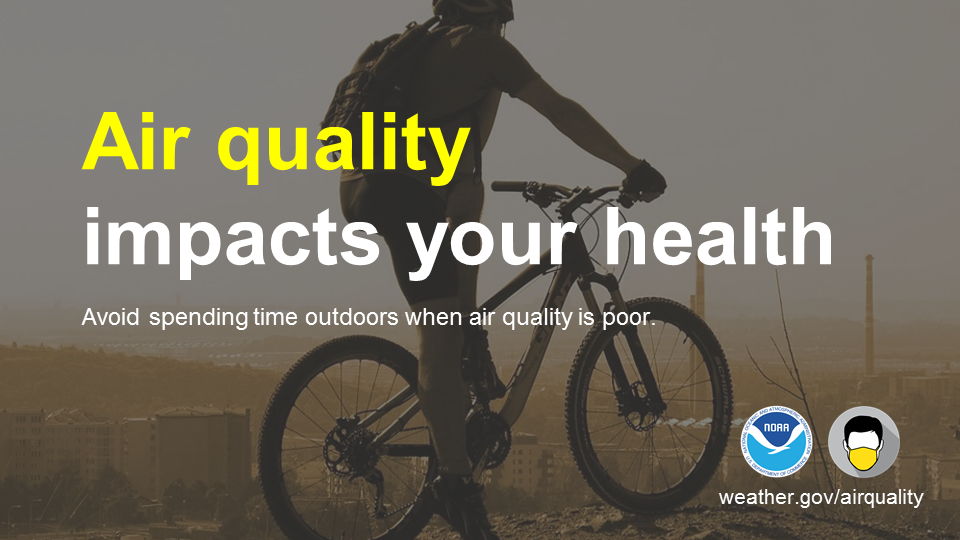Please help the NWS spread these important safety messages on social media! Everyone is welcome to use the text and images provided below to help the NWS build a #WeatherReady Nation. #WeatherReady Wednesday is a National Weather Service initiative to help spread weather safety messages each week. Each week you can pick a different topic to share. It can be based on the current weather or you can share one about weather that you don’t see in your area too often but others might if they are traveling.
Facebook
It’s #WeatherReady Wednesday! Time to get prepared! Don’t let bad weather sneak up on you! Get in the habit of checking weather.gov every morning before you go out. Make sure that you are ready for whatever the day may bring.
Twitter
It’s #WeatherReady Wednesday! Don’t let bad weather sneak up on you! Get in the habit of checking weather.gov every morning before you go out. #SummerSafety
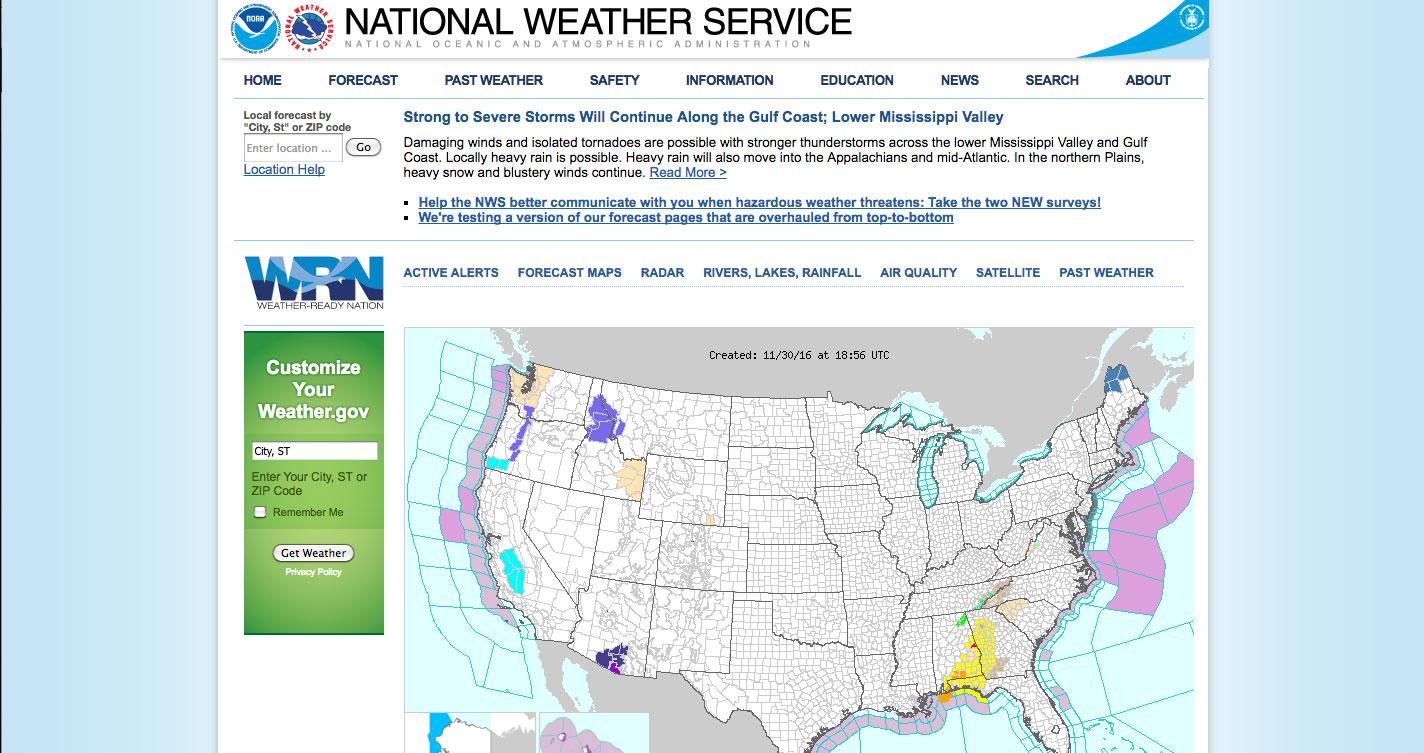
Facebook
The United States Lifesaving Association estimates that over 100 people die each year due to rip currents in the U.S. This #WeatherReady Wednesday, learn how to Break the Grip of the Rip®! ripcurrents.noaa.gov/ #SummerSafety #BeachSafety
Twitter
This #WeatherReady Wednesday, learn how to Break the Grip of the Rip®! ripcurrents.noaa.gov/ #BeachSafety #SummerSafety
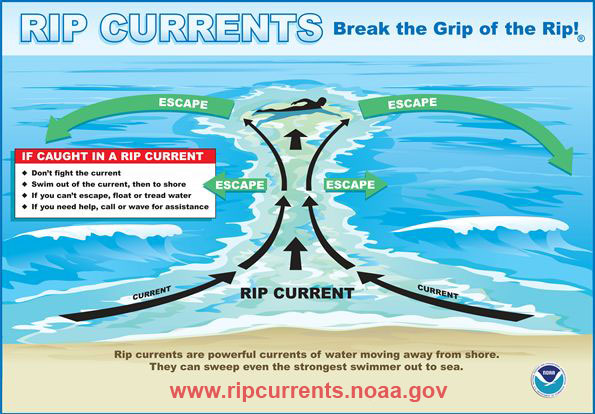
Facebook
It’s #WeatherReady Wednesday and today we are focusing on Spring Break! Stay safe this spring break -- only swim at beaches where lifeguards are present. The chance of drowning at a beach with lifeguards is 1 in 18 million. ripcurrents.noaa.gov #SummerSafety #BeachSafety
Twitter
It’s #WeatherReady Wednesday! Only swim at a beach with lifeguards. ripcurrents.noaa.gov/ #SummerSafety #BeachSafety
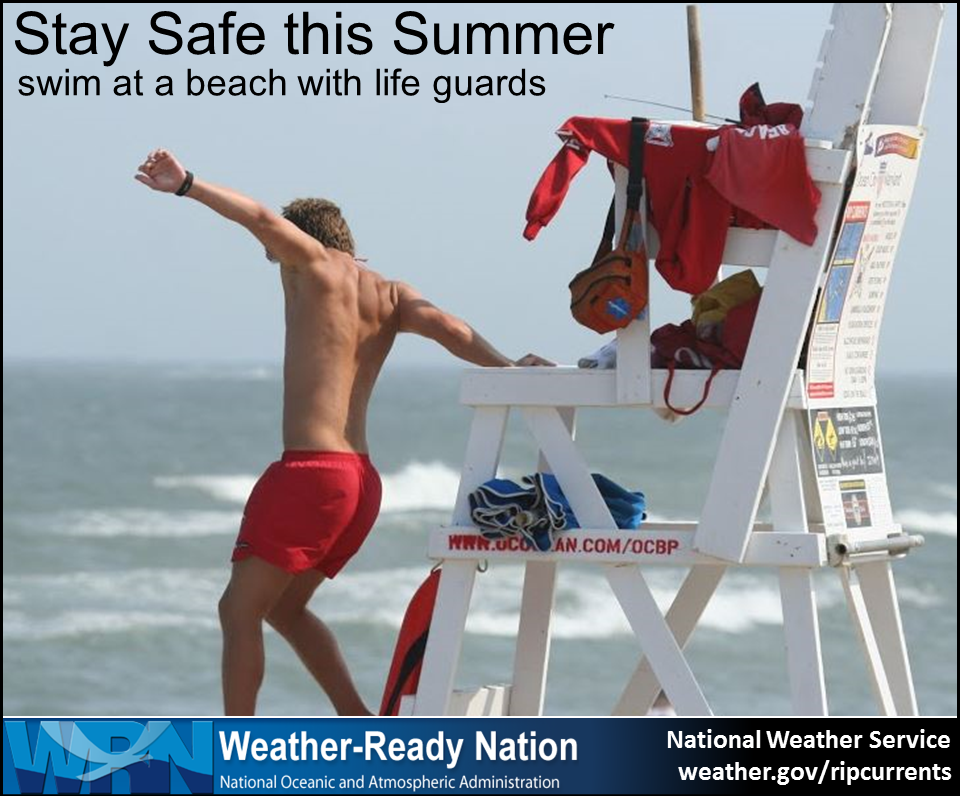
Facebook
It's #WeatherReady Wednesday! Know your risk.
It is NEVER safe to drive or walk into flood waters. It is impossible to know how deep the water is just by looking at it. Turn Around Don’t Drown! weather.gov/safety/flood-turn-around-dont-drown #FloodSafety
Twitter
It's #WeatherReady Wednesday! It is impossible to know how deep the water is just by looking at it. weather.gov/safety/flood-turn-around-dont-drown
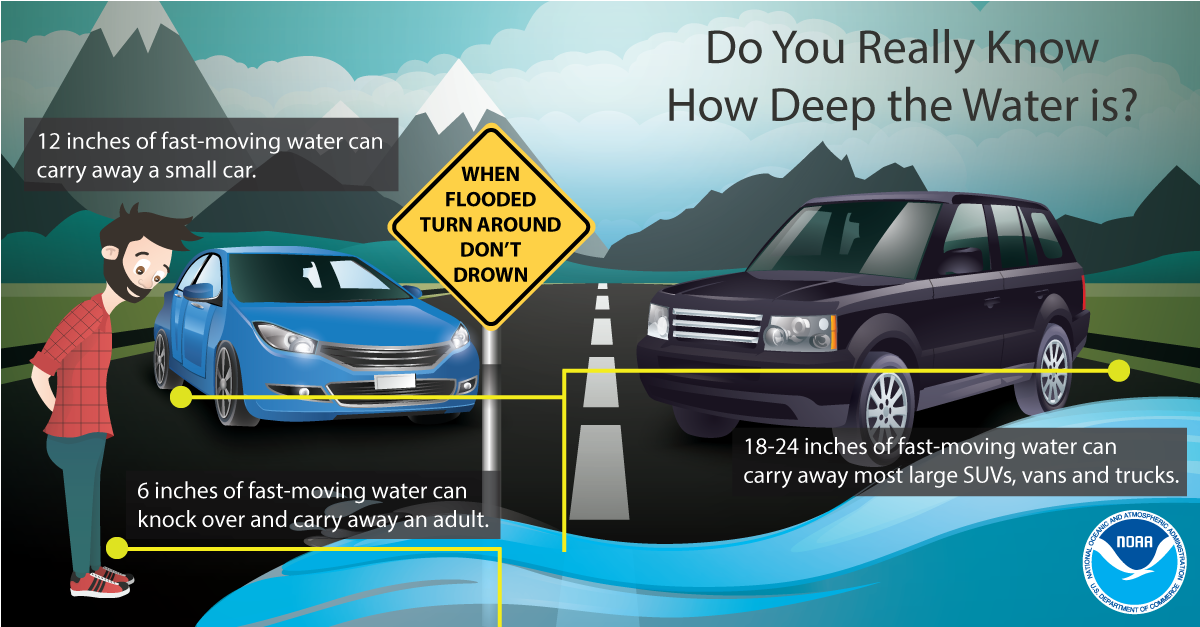
Facebook
Flooding can occur during any season. This #WeatherReady Wednesday, be prepared. Visit weather.gov/flood to learn more about flooding and how you can prepare before flooding happens. #FloodSafety
Twitter
This #WeatherReady Wednesday, be prepared for flooding. Visit weather.gov/flood #FloodSafety
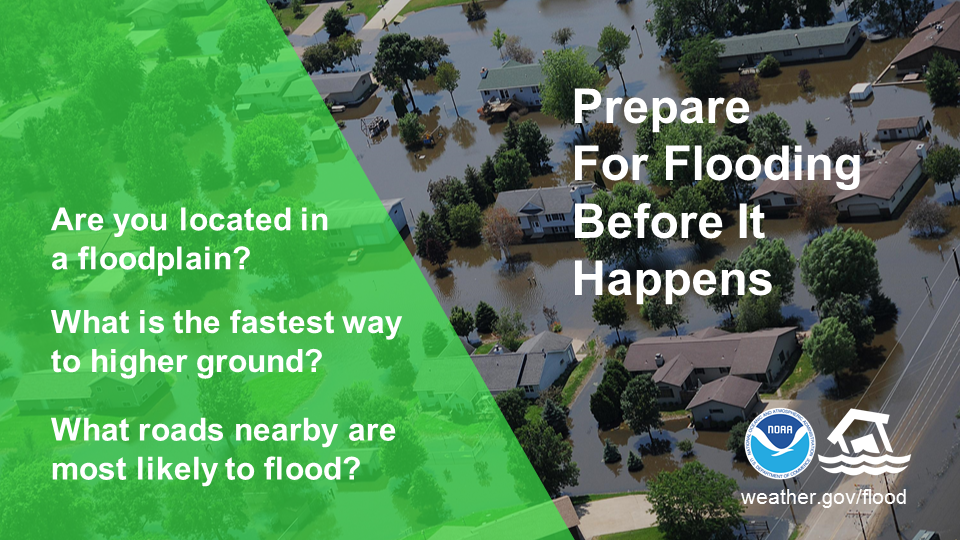
Facebook
Practice Heat Safety this #WeatherReady Wednesday! Heat is one of the leading causes of weather-related fatalities each year. Heat waves have the potential to cover a large area and may last for a number of days. Exposing a high number of people to a hazardous combination of heat and humidity can be very taxing on the body. Learn how to stay safe during a heat wave at weather.gov/heat #KeepYourCool #HeatSafety
Twitter
This #WeatherReady Wednesday, practice #HeatSafety weather.gov/heat #KeepYourCool
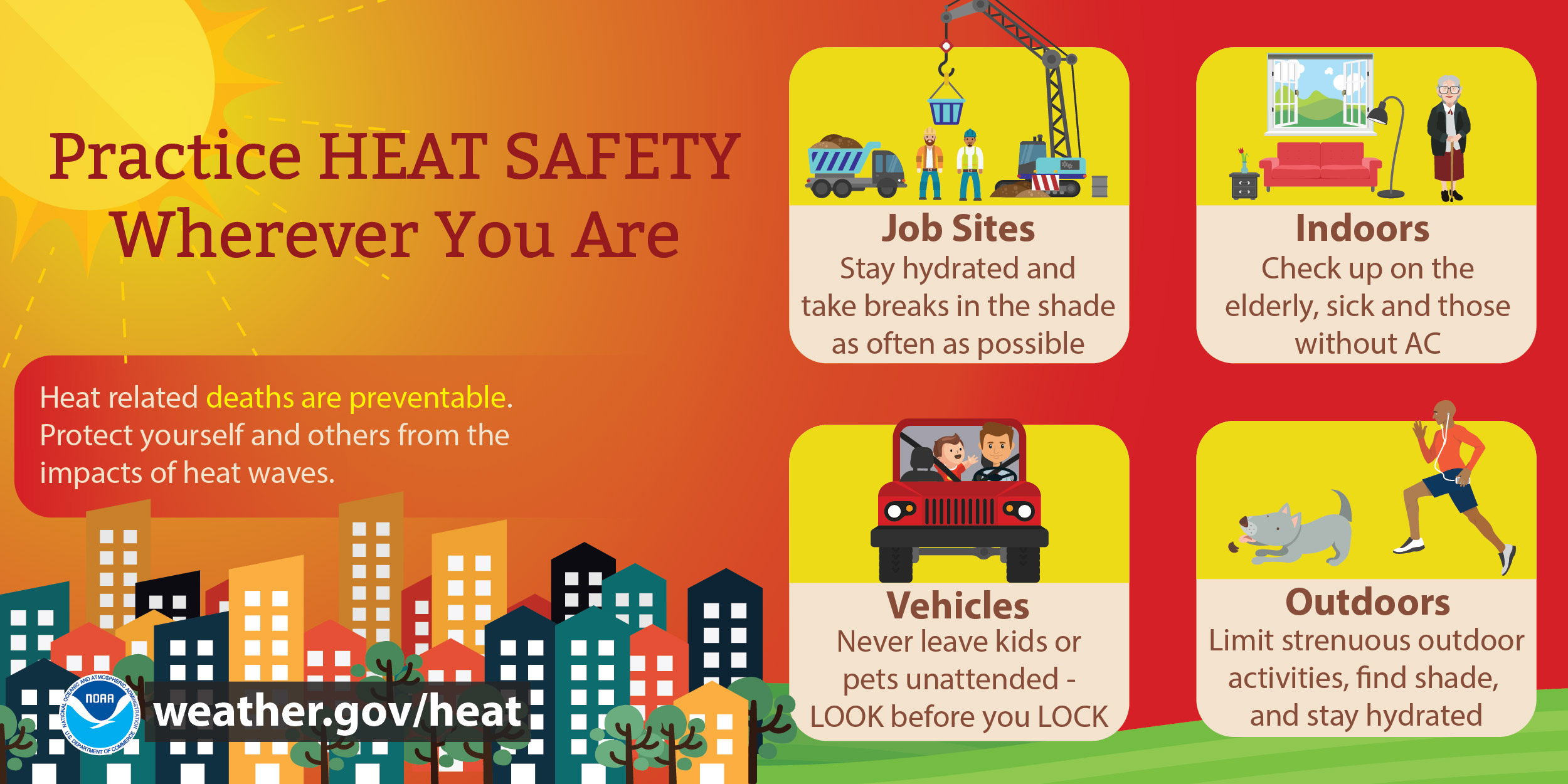
Facebook
It’s #WeatherReady Wednesday! Never leave children, disabled or elderly adults or pets in parked vehicles. Studies have shown that the temperature inside a parked vehicle can rapidly rise to a dangerous level for children, pets and even adults. Leaving the windows slightly open does not significantly decrease the heating rate. The effects can be more severe on children because their bodies have not developed the ability to efficiently regulate their internal temperature. weather.gov/safety/heat-children-pets #HeatSafety
Twitter
This #WeatherReady Wednesday, be aware of preventable heat deaths. weather.gov/safety/heat-children-pets #HeatSafety
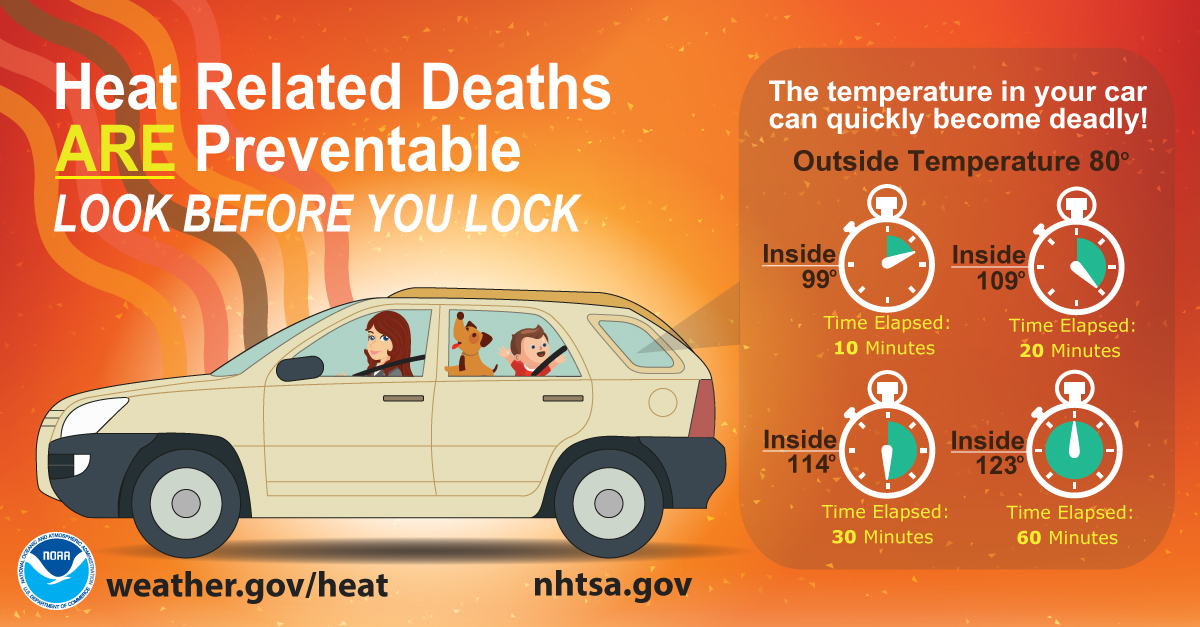
Facebook
It’s #WeatherReady Wednesday! Thunderstorms can produce deadly lightning capable of striking up to 10 miles away from a storm — so, even if you don't see rain you could be in harm’s way. Remember this simple message: When Thunder Roars, Go Indoors! weather.gov/lightning #LightningSafety
Twitter
It's #WeatherReady Wednesday. When Thunder Roars, Go Indoors! weather.gov/lightning #LightningSafety
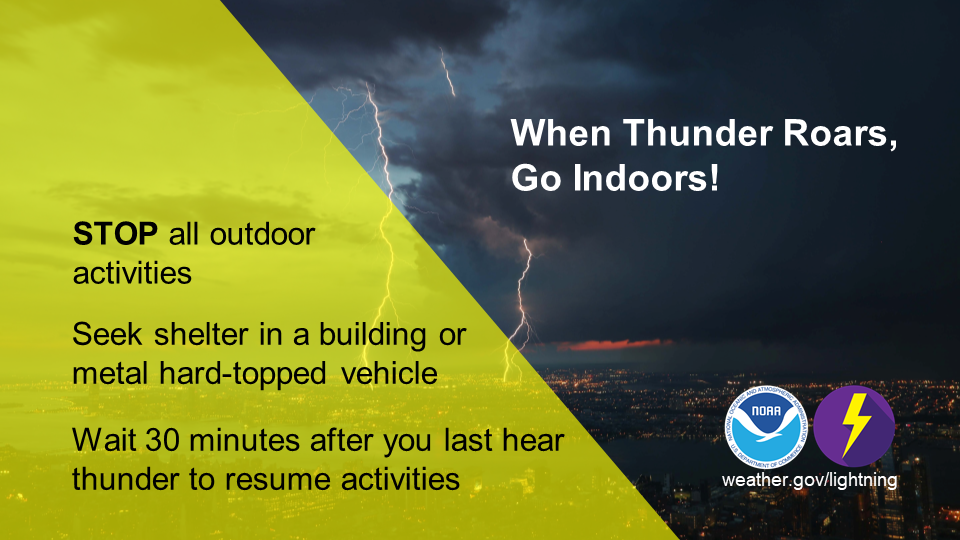
Facebook
It’s #WeatherReady Wednesday! Most lightning-related deaths occur when people are having fun outside. If you hear thunder or see lightning, immediately seek shelter in an enclosed building or vehicle. Remember, When Thunder Roars Go Indoors! weather.gov/lightning #LightningSafety
Twitter
It’s #WeatherReady Wednesday! Most lightning-related deaths occur when people are having fun outside. weather.gov/lightning
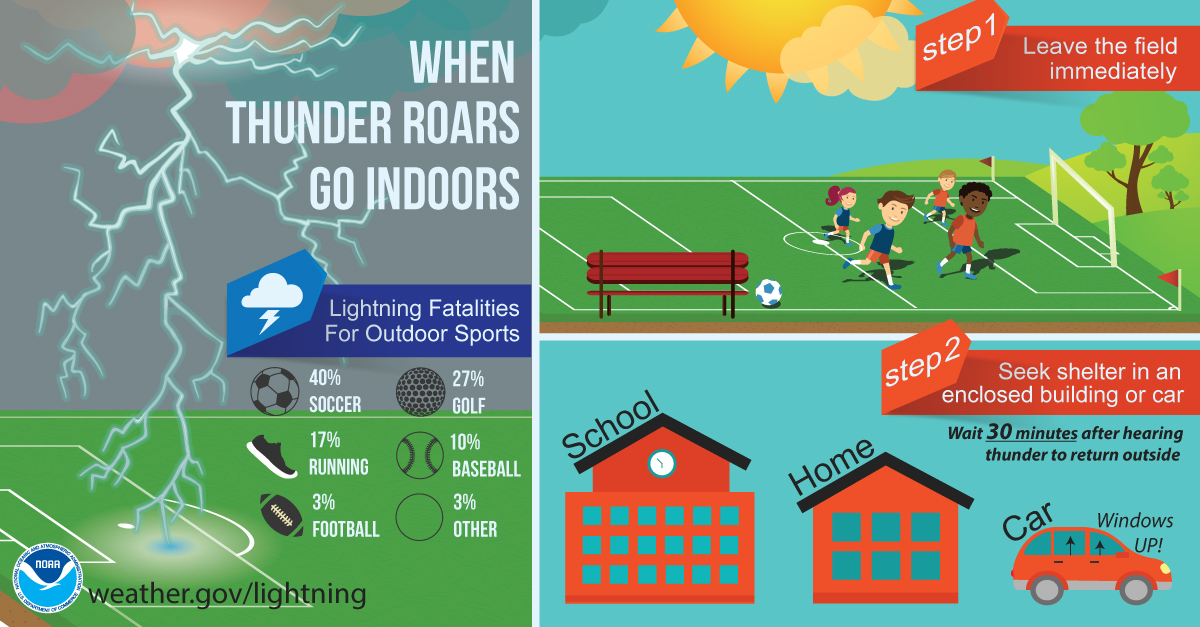
Facebook
This #WeatherReady Wednesday, watch out for thunderstorms if you’re spending time outdoors. Be aware of the forecast before you head out, and know how you will receive a thunderstorm warning if one is issued. Identify where the nearest shelter is located, and if the skies turn threatening, head inside immediately. weather.gov/safety/thunderstorm #SummerSafety
Twitter
This #WeatherReady Wednesday, watch out for thunderstorms if you're spending time outdoors. weather.gov/safety/thunderstorm #SummerSafety
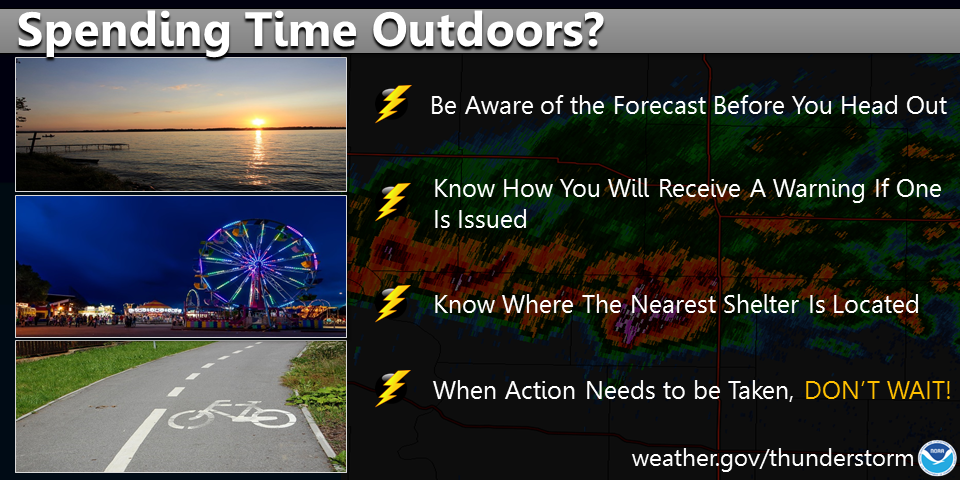
Facebook
This #WeatherReady Wednesday, know the difference between a severe thunderstorm Watch and Warning. A severe thunderstorm WATCH means BE PREPARED. A severe thunderstorm WARNING means TAKE ACTION. When a severe thunderstorm watch is in effect, stay informed and be ready to act, because severe thunderstorms are possible. When a severe thunderstorm warning is in effect, take shelter in a strong building, and get out of mobile homes that can blow over in high winds. Severe weather is occurring or will occur shortly. weather.gov/safety/thunderstorm-ww #SummerSafety
Twitter
This #WeatherReady Wednesday, know the difference between a thunderstorm Watch and Warning. weather.gov/safety/thunderstorm-ww
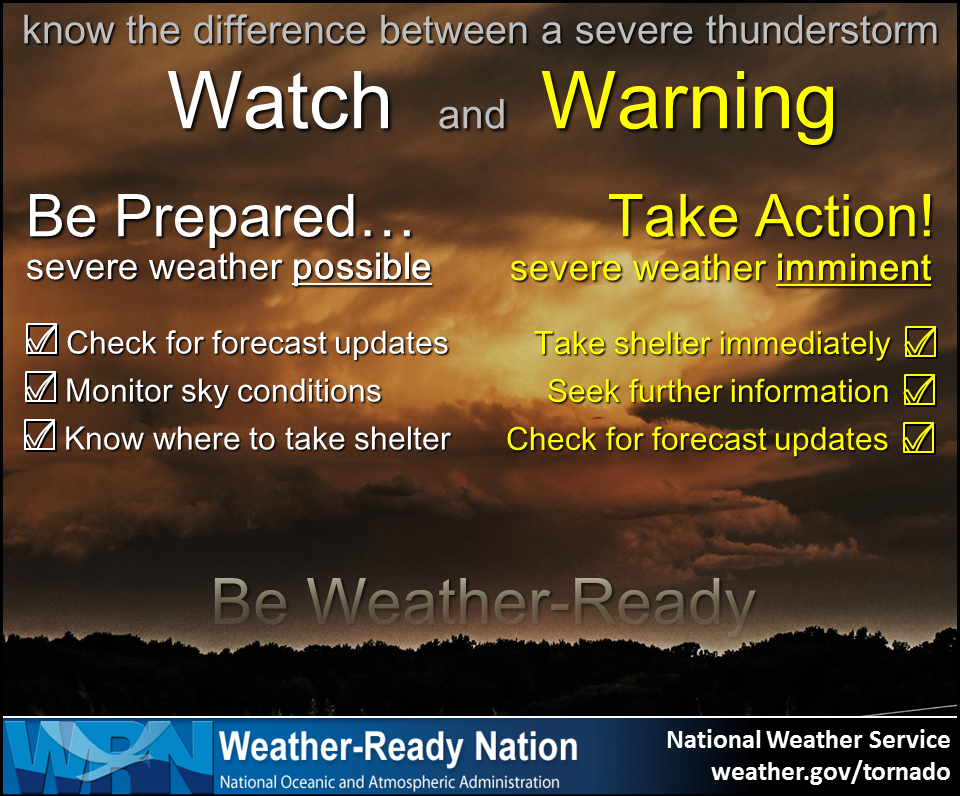
Facebook
This #WeatherReady Wednesday, know the difference between a tornado Watch and Warning. A tornado WATCH means BE PREPARED. A tornado WARNING means TAKE ACTION. weather.gov/safety/tornado-ww #SummerSafety
Twitter
This #WeatherReady Wednesday, know the difference between a tornado Watch and Warning. weather.gov/safety/tornado-ww
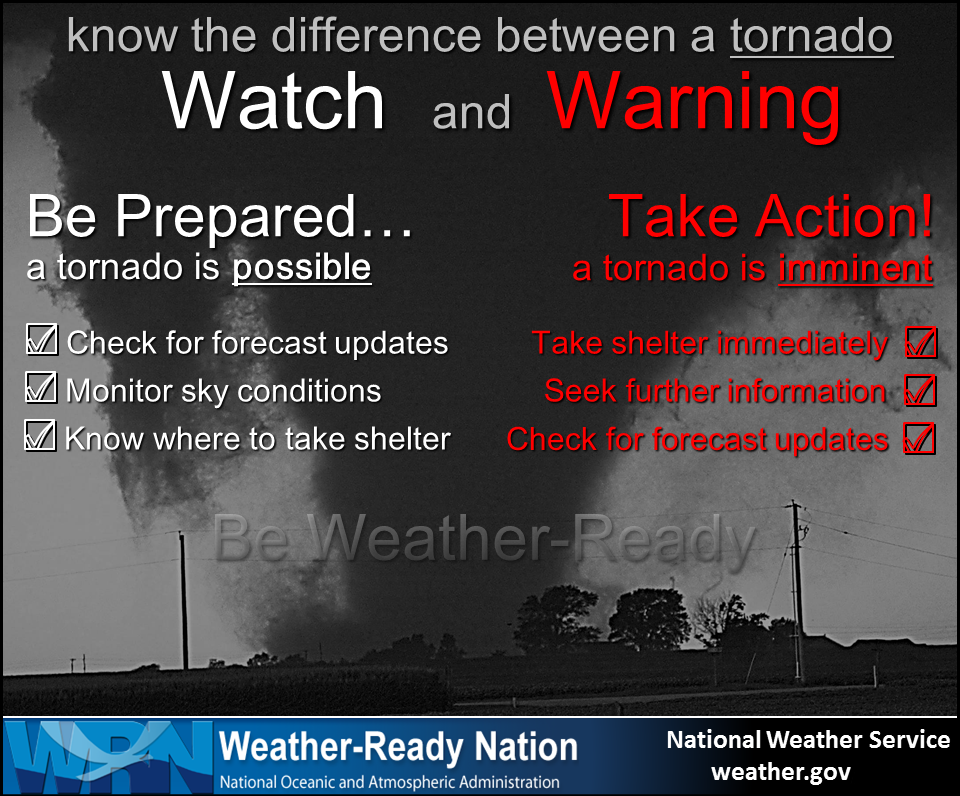
Facebook
It’s #WeatherReady Wednesday! Tornadoes can occur at any time of day or night. The nighttime hours are particularly dangerous because most people are sleeping. Wireless Emergency Alerts on your phone can save your life if you’re in the path of a tornado. Find out more at ready.gov/alerts #SummerSafety
Twitter
It’s #WeatherReady Wednesday! Remember that Wireless Emergency Alerts on your phone can save your life. ready.gov/alerts #SummerSafety
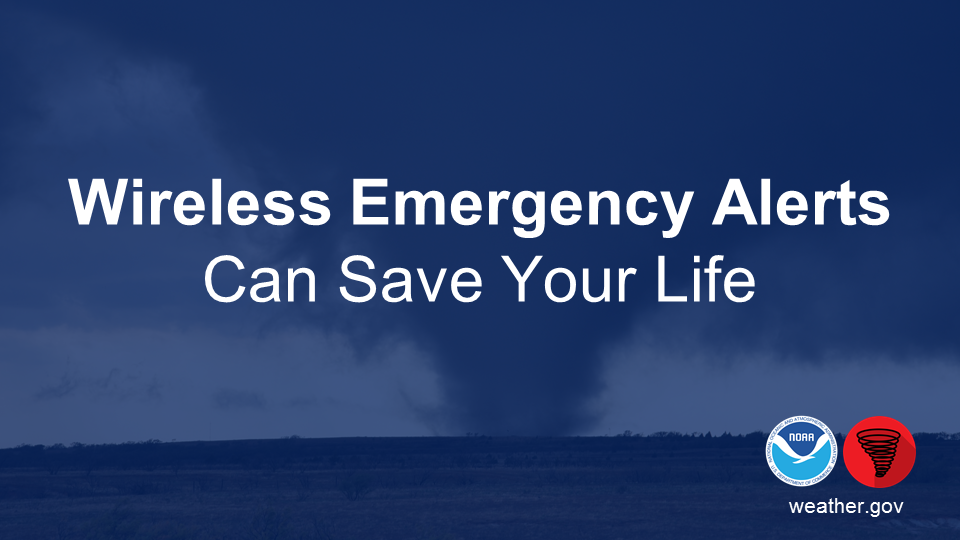
Facebook
It’s #WeatherReady Wednesday! During a drought, be vigilant. Conserve water by taking shorter showers and not washing your car. Practice fire prevention by properly disposing of cigarette butts and not setting off fireworks. Follow any additional directions from local officials. For more information about drought safety, visit weather.gov/drought #SummerSafety #DroughtSafety
Twitter
It’s #WeatherReady Wednesday! During a drought, conserve water, practice fire prevention and follow directions from local officials. weather.gov/drought #SummerSafety
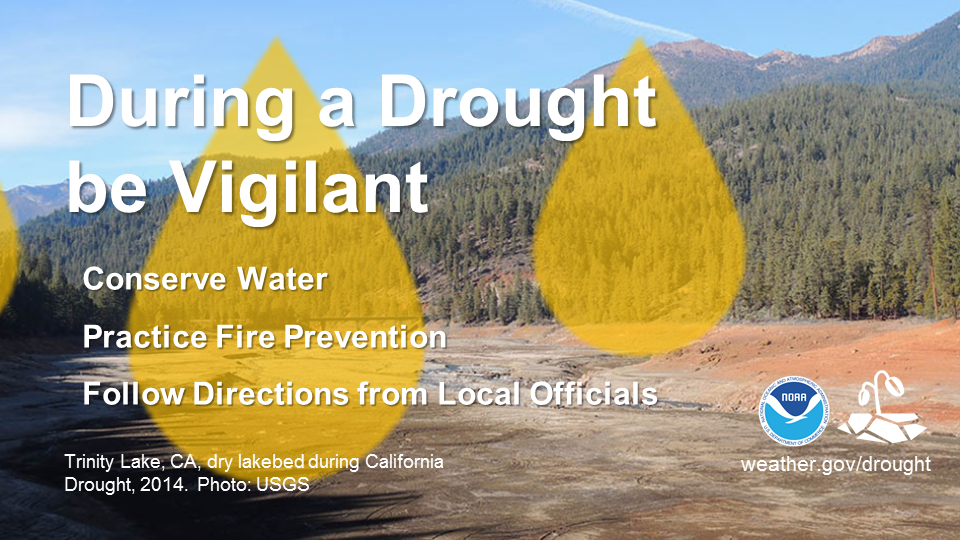
Facebook
It’s #WeatherReady Wednesday! When your hometown is suffering from drought conditions, do you know what to do? Visit the National Weather Service Drought Safety page to find out how you can help! weather.gov/drought #DroughtSafety #SummerSafety
Twitter
Visit the NWS Drought Safety page to find tips for areas in drought! weather.gov/drought #DroughtSafety #SummerSafety
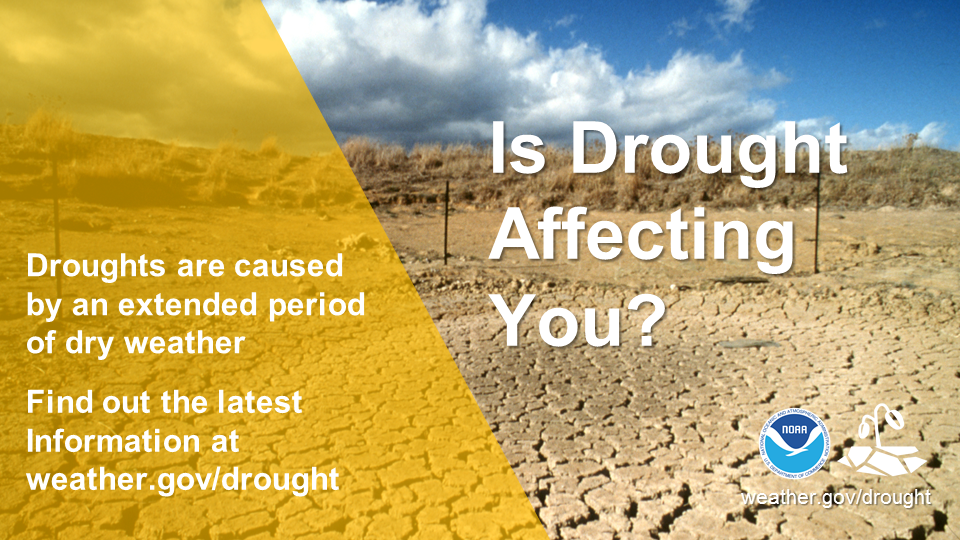
Facebook
It’s #WeatherReady Wednesday! Are you ready for hurricane season? Find out how you can prepare and know your evacuation zone. weather.gov/hurricanesafety #HurricanePrep #ItOnlyTakesOne
Twitter
Are you prepared for hurricane season? Visit weather.gov/hurricanesafety. #HurricanePrep #ItOnlyTakesOne
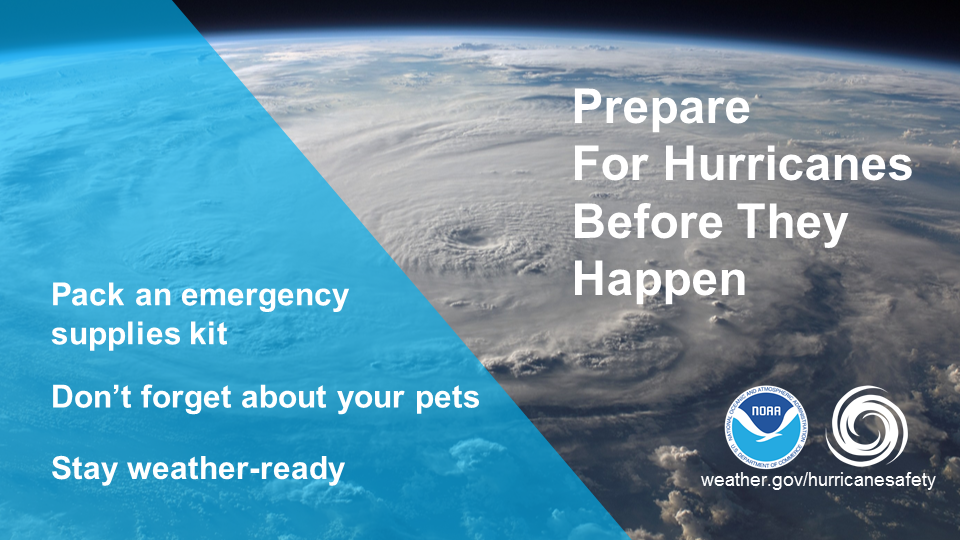
Facebook
Do you live in a hurricane evacuation zone? If so, you need to plan on where you and your family would go if you are told to evacuate. This #WeatherReady Wednesday, learn what to do with FEMA’s Evacuation Guidelines, and know your evacuation route! Visit ready.gov/evacuating-yourself-and-your-family. #HurricanePrep
Twitter
This #WeatherReady Wednesday, plan where your family would ride out the storm if told to evacuate. ready.gov/evacuating-yourself-and-your-family #HurricanePrep
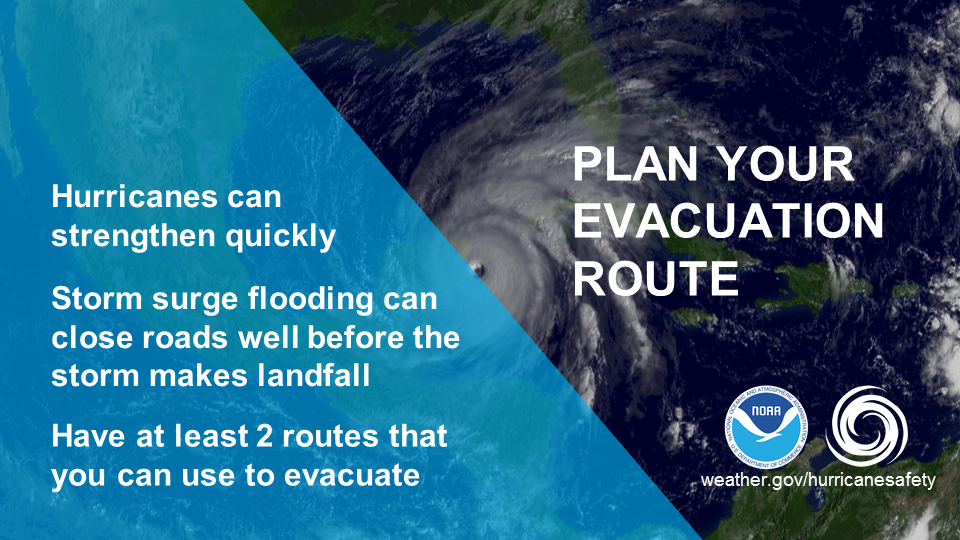
Facebook
It’s #WeatherReady Wednesday! Two of the most common pollutants in the U.S. are ozone, or smog, and particle pollution. Children, teens, older adults and people with heart or lung disease are at greater risk from these pollutants. When the forecast for pollutants is high, plan activities indoors to limit exposure. airnow.gov #SummerSafety
Twitter
It’s #WeatherReady Wednesday! Two of the most common pollutants in the U.S. are ozone and particles. airnow.gov #SummerSafety
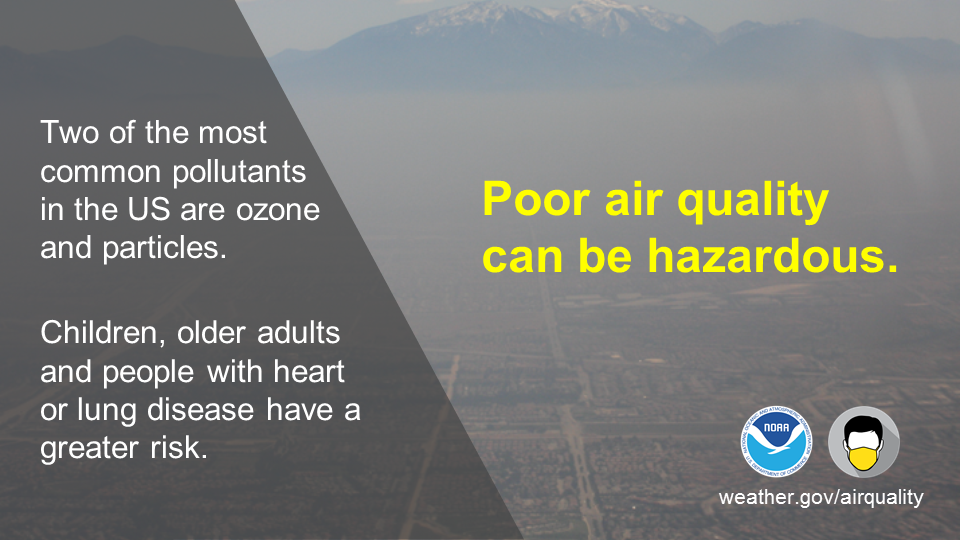
Facebook
You eat right. You exercise. You don’t smoke. You’re doing a lot of things to keep your heart healthy, but are you paying attention to air quality? If not, this #WeatherReady Wednesday is the day to start. Avoid spending time outside when the air quality is poor to help protect your heart. airnow.gov #SummerSafety
Twitter
This #WeatherReady Wednesday, remember to keep your heart healthy - eat right, exercise, don’t smoke & pay attention to air quality. airnow.gov #SummerSafety
